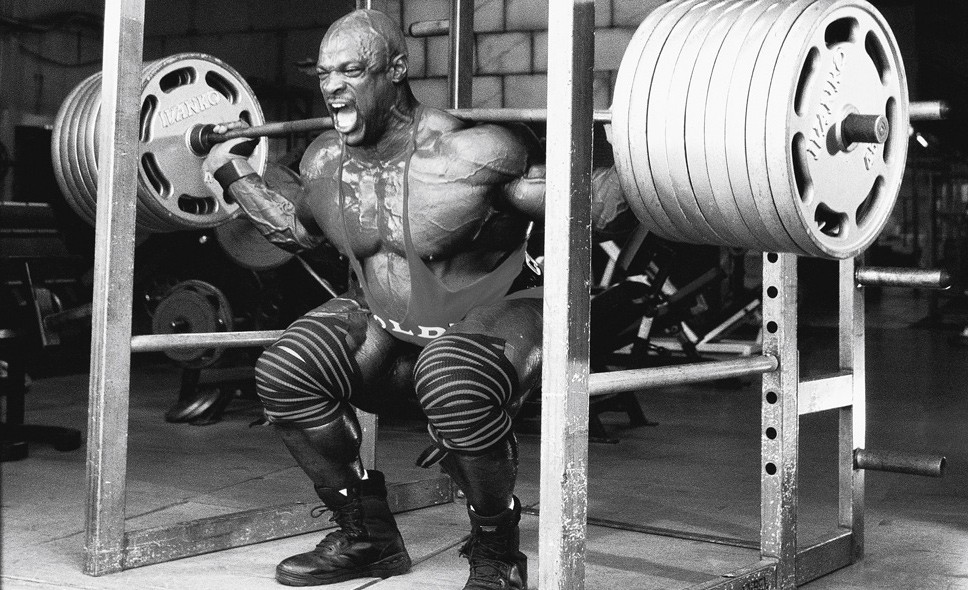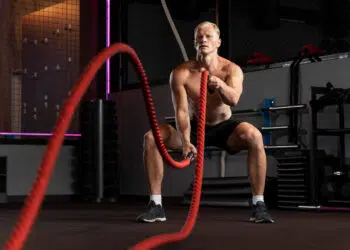If you’ve ripped workouts from fitness magazines and or websites, you’re not alone. It’s a bodybuilding rite of passage. Because when you’re concentrating on getting big you’re not worrying about the details of exercise programming.
Besides if it worked for the guys on the cover, it will work for you, right?
And if you don’t know already, that’s usually not the case. That’s why it’s a great idea to start writing your own programs and It adds another tool to your toolbox.
You don’t need to blindly follow the masses because you’re better than that. All you need is to put your thinking cap on for a few minutes and you’ll be writing great programs without the need for someone like me. Or Google.
Disclaimer
Writing programs is a mixture between science, guesswork and good judgement. This article will be kept simple, so you don’t get lost in the details and can concentrate on getting results.
Level Up Your Fitness: Join our 💪 strong community in Fitness Volt Newsletter. Get daily inspiration, expert-backed workouts, nutrition tips, the latest in strength sports, and the support you need to reach your goals. Subscribe for free!
Please consult your doctor if you’re starting an exercise program after a long break or have any health or orthopedic concerns.
The Questions
Before you get into the nitty-gritty of writing your own program, it’s time to answer a few questions.
1. What is your goal?
You’ll start by choosing one goal. You can chase more than one, but it will take you longer to achieve both.
However, you’re more likely to have more success if you stick to one goal
Please decide if your goal is fat loss or hypertrophy program.
Take a moment to decide this before you read on. This has a huge bearing on the program you’ll write.
2. How many days a week can you exercise?
For better results, set aside at least 3 days a week for lifting weights. Exercising 3 days a week is ideal when doing full-body training below but can be pushed to four if you’re a sucker for punishment
3. How much time can you dedicate to each training session?
You need to look at your schedule and decide how much time you can dedicate to training. Because this is going to dictate the length and intensity of your program.
4. How advanced are you?
This will determine the exercises you’ll program into the templates below. Because you don’t want to pick exercises that are too difficult or too easy. Going too hard may lead to injury and too easy will lead to a lack of results.
If you’re unsure of how advanced you are, be cautious and take a step back before moving on to a more advanced version of an exercise. For example, instead of a bent-over barbell row, start with a seat row.
Answering the above questions honestly will help you stick with your program and allow you to get the results you deserve because you’ll have some skin in the game.
The Exercises
To keep things simple, you’ll be concentrating on the six fundamental human movements that work all the muscles in the body from head to toe. These movements are
Program Templates
Fat Loss
After your warm-up, you’ll start with a strength exercise, lifting a heavier weight for lower repetitions to help you retain muscle and strength while you’re cutting calories.

You’ll alternate between an upper and lower body strength exercise on each training day.
Then you will go into a 5-exercise circuit alternating between a lower and upper body with minimal rest between exercises to maximize calorie burn. Please allow 24-48 hours of recovery between training for the best results.
Instructions
Training 1
Complete 8 reps (select a weight and exercise that allows you to do 8 repetitions with good form) of each exercise 2A-2D in a circuit fashion. If you’re performing unilateral exercises, do 8 reps on each side.
For farmer’s walk, walk 20 yards and then walk back for 20 yards for a total of 40 yards. Use at least 25% of your body weight in each hand.
Each set will take you 1 minute to complete and each circuit 5 minutes to finish. Rest 90 seconds after each circuit and do a total of 2-4 circuits.
Training 2
Choose a lighter weight than training one and avoid unilateral exercises. Do as many repetitions of each exercise 2A-2D in 30 seconds with good form. Rest for 30 seconds at the end of each exercise.
For the farmer’s walk, walk 20 yards and then walk back for 20 yards for a total of 40 yards. Rest 2 minutes at the end of each circuit and do a total of 3 circuits.
Training 3
Do 15 reps of each exercise of 2A-2D in a circuit fashion. For the farmer’s walk, walk 20 yards there and back for a total of 40 yards. Rest as little as possible between exercises and rest 1 minute at the end of each circuit. Do a total of 2-3 circuits.
1. Strength exercise (Squat, push, pull or hinge) 3-5 sets, 80-90% 1 RM 3-6 reps 2 minutes rest between sets.
2A. Squat variation
2B. Pull variation
2C. Hinge or lunge variation
2D. Push variation
2E. Carry variation
Building Muscle
Hypertrophy requires you to lift moderate to heavy weights for reps which causes muscular stress and damage. Sorry, there are going to be days when it’s hard to use the bathroom.

However, building muscle doesn’t tickle and you need to put your hard hat on and go to work.
You’re doing straight sets for strength work to prime your body to build muscle and then supersets to help maximize muscle growth. You’ll alternate between training A and training B for 3-4 days a week.
How many sets you’ll do of each superset will depend on how much time you have.
Read also 5 New Hypertrophy Workouts for Packing on Muscle Mass.
Instructions
After your warm-up, you’ll start will the strength exercise and you’ll use a weight that leaves a rep or two in reserve. If you need more rest between sets, please take it. With the supersets exercises please use a weight that allows you to complete all the repetitions with good form.
If you went heavy with the squat, do a hinge exercise for 2A and vice versa. And if you performed an upper-body pull, do an upper body push and vice verse.
Please rest for 24-48 hours between training.
Training A
1. Strength exercise (Squat or hinge) 3-5 sets 3-6 reps and rest 2 minutes between sets.
2A. Squat or hinge variation 8-12 reps
2B. Pull variation 12-15 reps
3 sets with 60-90 seconds rest between supersets
3A. Split squat or lunge variation 12 reps on each leg
3B. Press variation 8-12 reps
3-4 sets with 60-90 seconds rest between supersets
4A. Pull variation (different from 2B) 8-12 reps
4B. Push variation (different from 3B) 8-12 reps
2-3 sets with 60-90 seconds rest between supersets
The next superset is optional depended on the time you have. Choose a body part that needs extra work and hit it with a superset.
5A. Isolation exercise (bicep curl, triceps, shoulders, legs, hips, etc.) 8-15 reps
5B. Isolation exercise 8-15 reps
2-3 sets with 60 seconds rest between each superset.
Training B
1. Strength exercise (Upper body push or a pull) 3- 5 sets 3-6 reps and rest 2 minutes between sets.
2A. Squat variation 6-8 reps
2B. Pull or pull variation 6-8 reps (dependent on the strength exercise)
3 sets with 60-90 seconds rest between supersets
3A. Hinge variation 12-15 reps
3B. Push variation 6-8 reps
3-4 sets with 60-90 seconds rest between supersets
4A. Farmers carry variation 40 yards
4B. Pull or push variation (different from 2 and 3) 12-15 reps
2-3 sets with 60-90 seconds rest between supersets
This superset is optional if you have the time. Choose a body part that needs the extra work and hit with a superset.
5A. Isolation exercise (biceps, triceps, shoulders, quads, etc.) 8-15 reps
5B. Isolation exercise 8-15 reps
2-3 sets with 60 seconds rest between each superset.
Wrapping up
Do the training of your choice for 6 weeks in total. If you need more than 48 hours to recover between trainings, take it. When the weight becomes less challenging, go up by 5 pounds.
Don’t hold yourself back because you’re too good for that.











